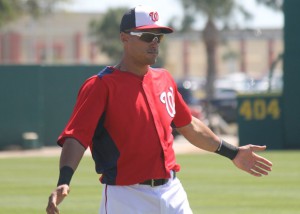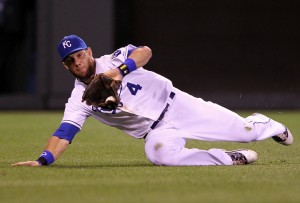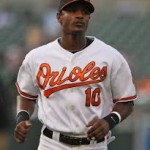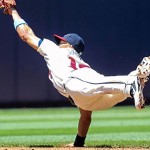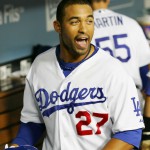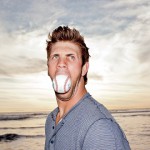Well happy new year. After going 9 months w/o a mailbag, MLB.com Nats beat reporter Bill Ladson has put out two in a row!
Here’s his 1/5/15 version. I love doing these things.
Q: Do you see Trea Turner as a future leadoff hitter for the Nationals? If so, when? Ian Desmond has one year left on his contract, so I have to think the front office is counting on his rising through the Minor Leagues quickly like Anthony Rendon.
A: Yes, I can see Trea Turner as a lead-off hitter in the majors. Blazing speed (some scouts have rated his speed at 80 on the 20-80 scale … which is a real rarity), excellent bat skills during his 3 years at NC State (a career college slash line of .342/.429/.507 playing in the nation’s toughest baseball conference), and in short sample sizes in the pros he’s got good OBP numbers. Everything you want in a lead-off guy. In college he had power (8 homers in 54 games his junior year playing with BBCOR bat, 2nd in the ACC); that’s a nice combination if it translates to the pros.
The question I have about Turner is whether he can stick at short. Or, more to the point, if he’ll be a good enough shortstop to appease the defensive-minded Mike Rizzo. All the scouting reports I’ve seen say the same thing: good fielder, great range … and an iffy arm that may push him to second. Well, you have to think Rizzo acquired a guy like Turner specifically because he thinks Turner *can* stick at short, and is a ready-made replacement for Desmond. Otherwise; why get him? Its a heck of a lot easier to find a second baseman than a shortstop in this league (current issues replacing Danny Espinosa notwithstanding).
Can Turner be a fast riser? Well, he’s not nearly as accomplished a college player as Anthony Rendon (who, lets not forget, was College Player of the year as a sophomore). Rendon ended his first pro season in AA and hit his way to the majors permanently by June of the following year. That’s a pretty amazing trajectory. And it included lost time to injury. Turner ended his first pro season in low-A by way of comparison, and needs a two-level jump in 2015 to have a shot at a 2016 debut, and a 2-level jump next year is going to be severely hampered by the fact that he’s likely to be languishing in San Diego’s spring training facility until June, when he can officially be traded. He’s losing a half of year of development time most likely. So, late 2016 to me is a more realistic goal, if everything goes well.
Meanwhile, that leaves a gap in the shortstop coverage if Ian Desmond leaves. Here’s a thought; if Desmond leaves in FA after 2015, you put Espinosa back at his natural shortstop position, find a second baseman (Dan Uggla anyone? 🙂 ) and then wait for Turner to arrive. If Turner can play short, so be it. If he can’t, you put in at 2nd. I like that plan.
Ladson says the Nats have “been quiet” on Turner since he’s not technically a Nationals player; makes sense; you wouldn’t want tampering charges.
Q: How is Desmond not locked up, or even the No. 1 priority? I understand Jordan Zimmermann is a staff ace, but shortstop is a prime position and every team desires one. Desmond is one of the best in baseball and can’t be replaced.
A: Because Desmond took a step back both offensively (from a 113 to a 103 OPS+) and defensively (UZR/150 from 4.4 to 0.1) in 2014 from the previous year. I’d be slightly hesitant too. I used to think that Elvis Andrus‘s contract was a fair comp for Desmond. But now it looks like the Andrus contract was actually a massive over-pay, and valuing Desmond may be more difficult than we thought.
When I think about roster construction, you go up “the spine” of the team. Catcher, Pitchers, Short and Center Field. Those are the key positions to lock up with quality players. So no arguments that Desmond and Shortstop in general are huge priorities. But now the problem becomes this: is Desmond’s 2014 decline a one-off or a concern? And, what is he worth? If you think Andrus is an overpay ($15M a year through 2022), and if Troy Tulowitzki is the best offensive shortstop in the game (at $20M/year for the next four years with annual injury issues), then where does Desmond fit in? Some sampling of shortstop contracts: J.J. Hardy is 3/yrs/$40M for AAV of about $14M/year. Jose Reyes makes $22M/year for the next three years, which seems rather high to me. Jimmy Rollins is on an $11M option for 2015. Jhonny Peralta is on a 4yr/$53M deal for an AAV of about $13M. So clearly the market is at least $15M/year for a quality shortstop.
Based on who the Nats have in the pipeline at short (past Turner … practically nobody) and based on who projects to be available in FA in 2016 (also practically nobody), yes I think Desmond is a priority. My guess is that the front office is juggling all sorts of stuff right now, and just hasn’t come to any conclusions. I’d be perfectly comfortable offering him 5 to 6 years at an AAV of $15M (6yrs/$90M) with a club option; that’s clearly not enough as the team has offered him *more* than that in the past apparently and he’s turned it down. He’s entering his age 29 season; that’d lock him up through his age 34 season … a gamble for a shortstop, but a good one for a franchise player who has been with the organization since he was 18. I would have postulated that perhaps Desmond (with his Florida ties and the heavy Yankees presence down there) wanted to slide into the vacated Derek Jeter spot … but the Yankees just acquired a long term SS in Didi Gregorius, so maybe Desmond’s agent and him are strategizing. Besides; Washington seems like a better positioned franchise right now than the Yankees (as hard as that is to write) for post-season positioning.
Ladson points out the Nats offered Desmond in excess of $100m and then cryptically says “lets see what happens in the next few weeks.”
Q: I noticed Rafael Furcal is a free agent. Might the Nats sign him as a veteran middle-infield stopgap until Turner and Wilmer Difo are ready?
A: Rafael Furcal?! Wow,that’s a heck of a pull. You mean the same Furcal who has played in a grand total of 9 major league games since 2012 thanks to injuries and will be 37 next season? He hasn’t played a full season of injury-free baseball since 2009. Why would we possibly consider this guy? No way; there’s younger, more reliable middle infield options out there. Difo, by the way, played in low-A last year. I don’t think we’re seeing him anytime soon. Mid 2017 maybe? Ladson says that Furcal *tore* his hamstring in Winter Ball; geeze. He also states the obvious; we’ll see lots of Dan Uggla and that we should trade for Ben Zobrist. Thanks for the scoops there, Bill.
Q: What are your predictions as to how the NL East will stack up in 2015, especially given personnel changes and improved health throughout the division?
A: Nats win the division with 90 wins. Marlins 2nd with like an 83-79 record. Mets in 3rd at about .500. Braves in 4th at about 75 wins. Phillies last place, with somewhere in the 68 range of wins. Ladson seems to go Nats-Marlins-Mets too.
Q: I’m frustrated by Desmond’s strikeouts. If he could make contact for 20 percent of his strikeouts, he would be all world. What can the Nats do to help him make more consistent contact — just patience at the plate for better pitch selection?
A: Welcome to modern baseball. Swing for the fences all the time; strikeouts be damned. Nobody remembers you struck out 180 times when you hit 20+ dingers from the short-stop position. Now … strike out 122 times in 119 games and hit .220? Then you’re in trouble, Mr. Espinosa. As far as the question goes; maybe you park Desmond further down the order, tell him he’s not a run producer any more and tell him to focus less on homers, more on solid contact. Maybe that helps. Maybe not; the Nats offense is seemingly always a man down, which means Desmond is always pushed into a 3-4-5 hole spot, where he’s looking to drive in runs. I expect similar numbers in 2015. Ladson reminds us that Desmond had the flu last year.
